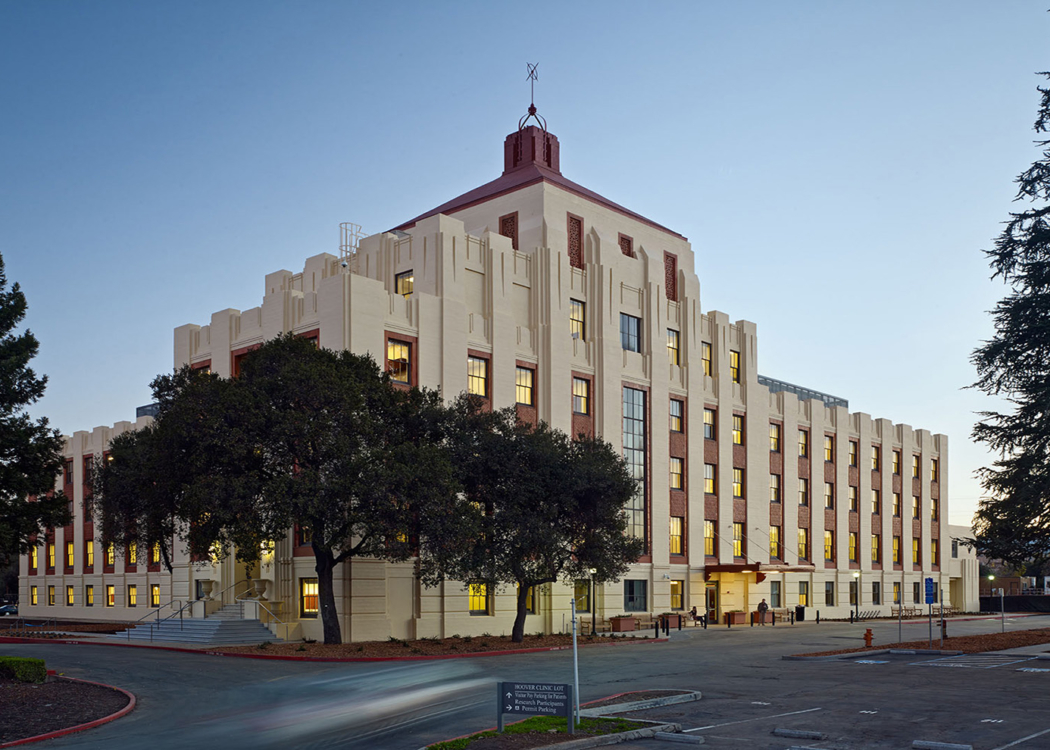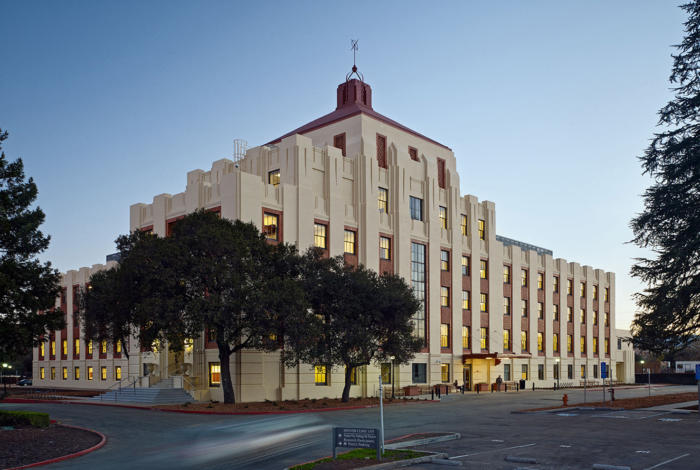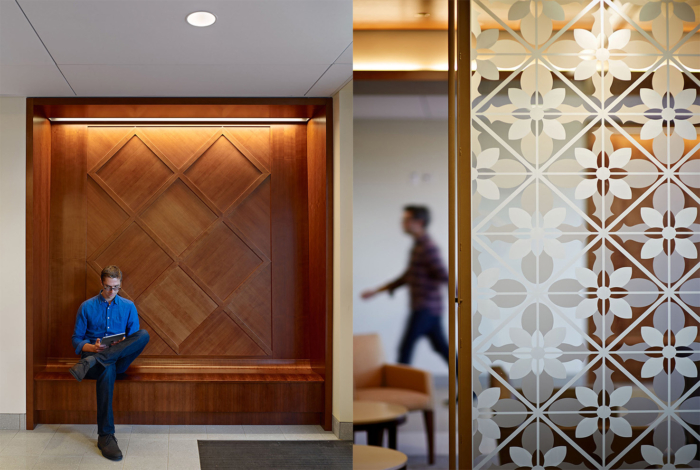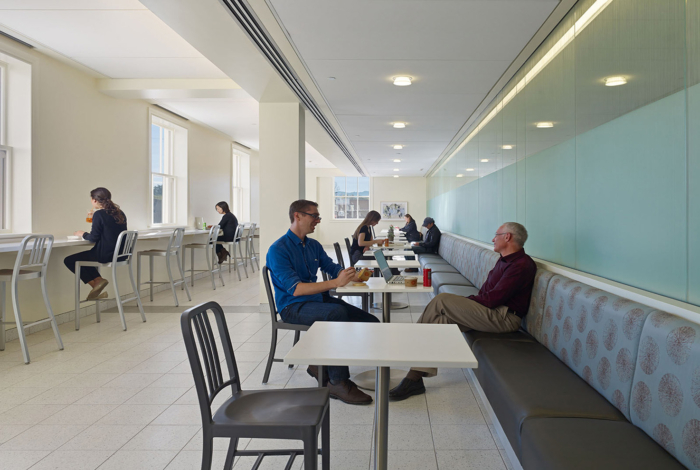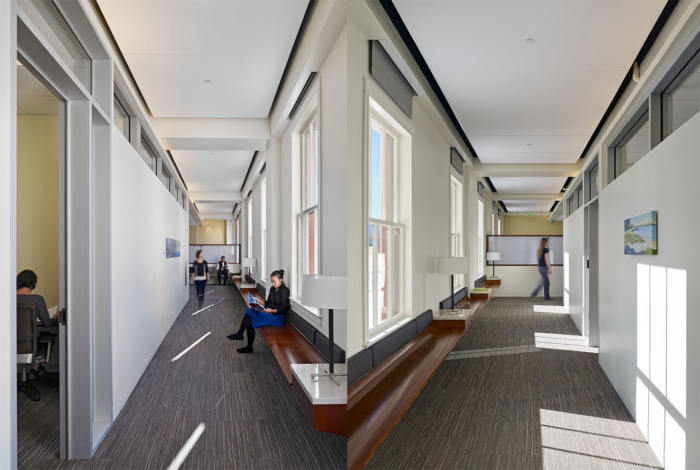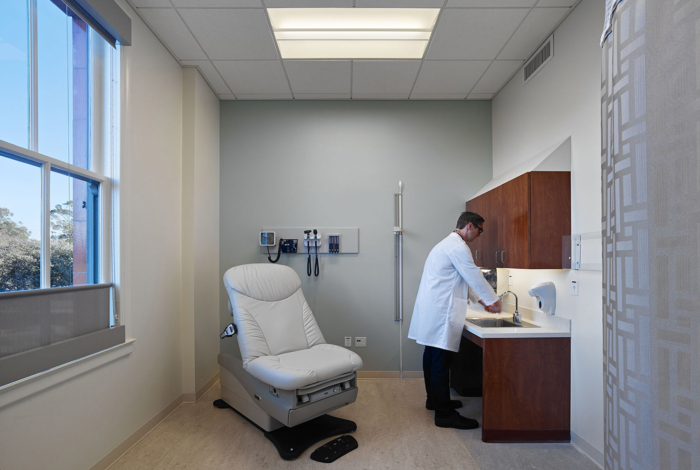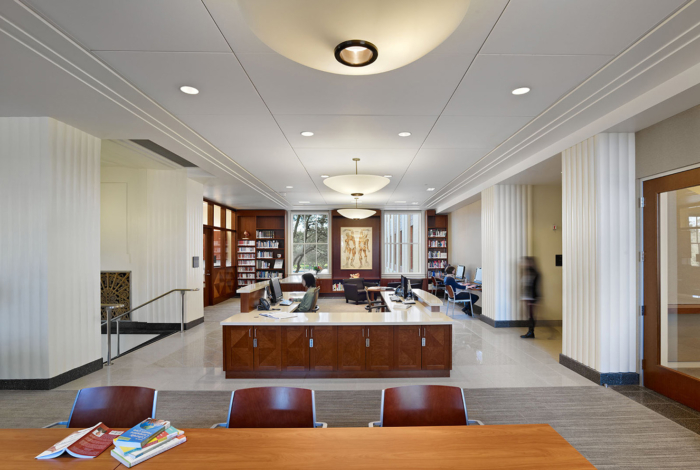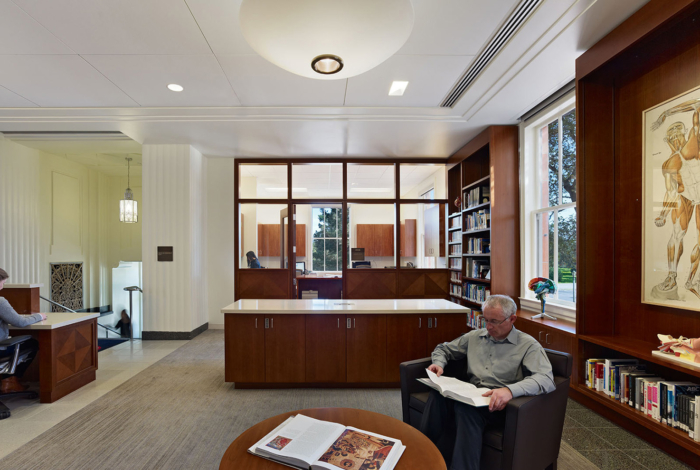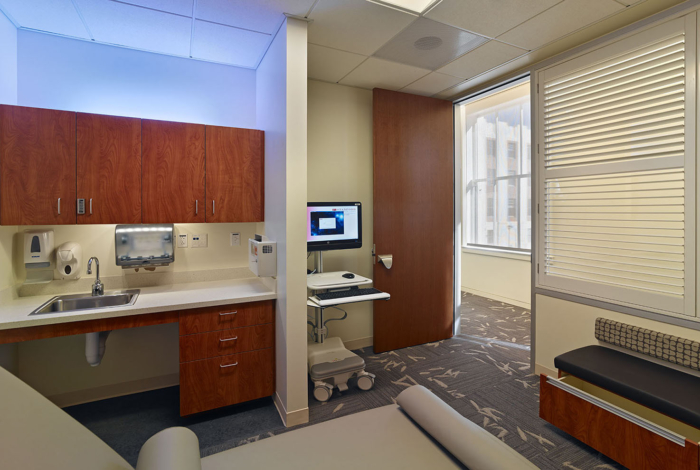Stanford University – Hoover Pavilion Renovation
TEF Design completed the renovation of Stanford University’s Hoover Pavilion located in Stanford, California.
Hoover Pavilion first opened as Palo Alto Hospital in 1931 and was expanded in 1939. Stanford University operated the hospital for the city until taking over ownership in 1959, renaming it Hoover Pavilion and converting it to house medical offices. Designed in the Art Deco style, the 85,000-square-foot building features ziggurat massing with four-story wings and five- and six-story towers. As part of the renovation and expansion of the Stanford University Medical Center, the university sought to restore the exterior while adapting the interior to accommodate state-of-the-art medical clinics and offices.
The original hospital, constructed in accordance with the principles that Florence Nightingale developed to control infection, was broken into small wards, each with its own support facilities to minimize contagion. The design team had to address an inflexible concrete structure, low floor-to-floor heights, lack of centralized air conditioning, a double-loaded corridor through the middle of the narrow floor plate, and placement of structural columns at the building’s center.
Most of the historic interior had already been gutted in prior renovations, so it was possible to demolish existing interior walls and reconfigure the interiors while still meeting the Secretary of Interior’s Standards for the Treatment of Historic Properties. To carve out deeper floor plates, the design team eliminated the central corridor, placing circulation along the side of the building instead, allowing it to receive plenty of daylight via triple-height windows. The new corridor doubles in width at intervals in order to serve as a waiting area. Mechanical systems were collected into the middle of the floor plate and concealed in a dropped ceiling, enabling the public circulation area to have high ceilings.
Because the resulting floor plate was still atypically narrow, the design team modified the standard medical module’s sequence of waiting area, check-in station, diagnostic and treatment areas, and physician offices; the waiting rooms were compressed in size, with benches added to the hallway for supplemental seating, and the physician offices were not embedded within the clinic, although they are on the same floor. Designed in accordance with Stanford University Medical Center’s state-of-the-art scheduling system, which schedules a smaller number of patients at a time to facilitate near-on-time delivery of care, the building did not need to devote as much space to waiting areas as is typical, and the café, library, and lobby provide additional spaces to wait.
The new interior walls incorporate motifs found on the historic Art Deco exterior. The design team varied materials to create a noninstitutional feel, delineate intimate neighborhoods, and give each space its own identity, with changes to ceiling patterns and carpet color and texture.
The exterior and most windows were restored; windows that had deteriorated were replaced with new matching ones. A replica of the original iron finial was returned to the top of the highest tower. The renovation met California Green Building Code Tier 1 standards, employing sustainable strategies such as high-efficiency lighting, natural light, and recyclable materials.
Architect: TEF Design
Project Team: Bobbie Fisch, CID, LEED AP – Co-Principal, Alyosha Verzhbinsky, AIA – Co-Principal, David Ko, Louise Louie, Ellen Nystrom, Nicole Forsberg, Karen Nealon, Kacper Bigosinski, Adriane Colby, Marlon Cruz, Breck Polley, Alex Stewart, Stephen Simon
Consulting Historic Architect: Page & Turnbull
Contractor: Vance Brown Builders
Photography: Bruce Damonte

